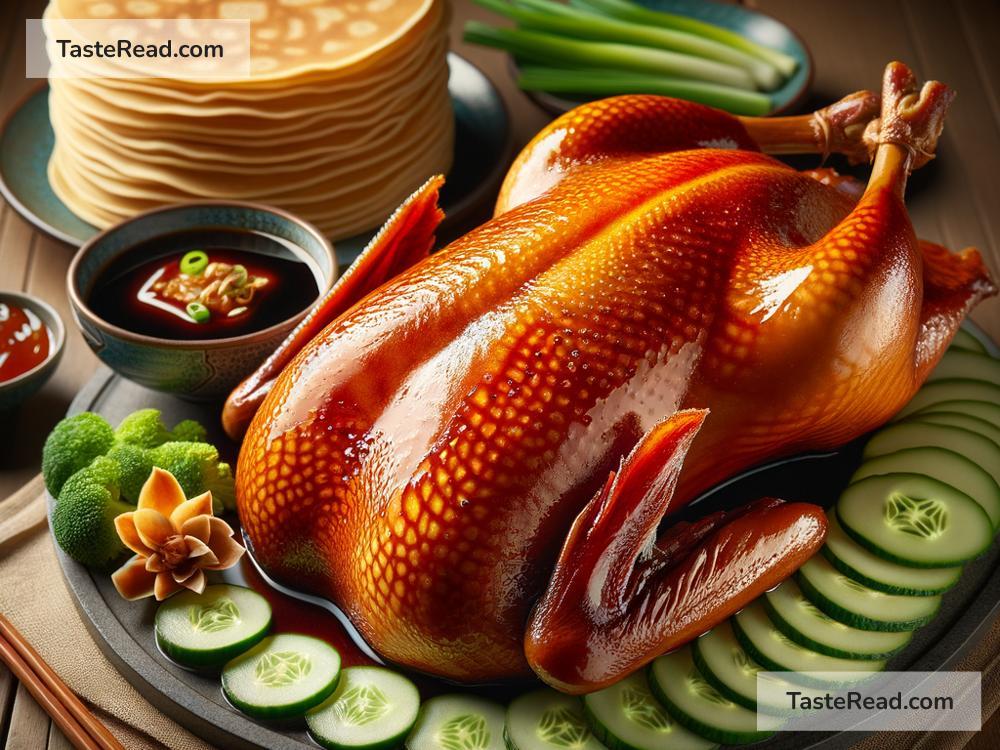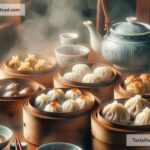The Story of the Chinese Peking Duck
Peking Duck is one of the most famous dishes in Chinese cuisine, admired all over the world. With its crispy skin, tender meat, and delightful flavor, it’s no surprise that this dish has become such a global favorite. But where does it come from? Let’s take a journey through the history of Peking Duck and discover the fascinating story behind this iconic dish.
Ancient Beginnings
The history of Peking Duck dates back more than 700 years to the Yuan Dynasty (1271–1368). During this time, roasted duck was a popular dish enjoyed in royal palaces. However, it wasn’t yet the Peking Duck we know today. The ducks were simply roasted whole, and the recipe was fairly simple. Even so, the dish was considered a delicacy and was reserved for emperors and their attendants.
Things began to change during the Ming Dynasty (1368–1644). The chefs working in the imperial kitchens of Beijing started experimenting with new ways to prepare duck. The capital city of Beijing, referred to as “Peking” in older English texts, would soon give the dish its famous name. Over time, the recipe evolved, and the chefs created a special cooking method that focused on making the duck skin crispy while keeping the meat soft and juicy.
The Secret to the Perfect Duck
One of the key features of Peking Duck is its unique preparation method. The dish starts with a breed of ducks known as “Peking ducks,” which are raised specifically for their tender meat and high fat content. Before cooking, air is pumped under the duck’s skin to separate it from the meat. This step ensures the skin becomes extra crispy during roasting. The duck is then coated with a mixture of sugar, honey, soy sauce, and spices and hung to dry for several hours.
The drying process is crucial, as it helps the skin achieve its iconic golden-brown color when cooked. Once fully dried, the duck is roasted in a special oven. The result is a perfectly cooked duck with juicy meat and skin that practically melts in your mouth. This technique is so distinctive that it has been copied in kitchens all over the world.
A Feast Fit for Emperors
By the early Ming Dynasty, Peking Duck had become a regular dish served in the imperial court. Emperors loved the flavors so much that they ordered their chefs to continuously refine and perfect the recipe. In fact, Peking Duck was often served during royal banquets and special events. Over time, the prestige of this dish spread beyond the palace walls and into the general public.
By the 15th century, restaurants specializing in Peking Duck started popping up around China. One of the earliest and most famous of these establishments was Bianyifang, which began serving Peking Duck in Beijing in 1416. Even today, Bianyifang continues to operate and is considered one of the best places to enjoy authentic Peking Duck.
The Art of Eating Peking Duck
Eating Peking Duck is just as much an art as preparing it. Traditionally, the dish is served in three courses to allow diners to experience the full flavor of the duck. First, the crispy skin is sliced off and eaten with thin pancakes, cucumbers, spring onions, and sweet bean sauce. The skin is the star of the dish, and skilled chefs often slice it into perfectly thin pieces right in front of guests.
The second course usually focuses on the meat. It might be stir-fried with vegetables or served with noodles and soup. Finally, the bones of the duck are boiled to create a delicious broth, which is served as the final course of the meal. Each element of the dish highlights a different part of the duck, ensuring nothing goes to waste.
Peking Duck Goes Global
As Chinese immigrants traveled to other parts of the world, they often brought their cuisine with them. Peking Duck was no exception. Over time, this dish gained international popularity, particularly in major cities like New York, London, and Sydney. Today, Peking Duck remains a sought-after delicacy in Chinese restaurants across the globe.
Chefs outside of China have also embraced the dish, adding their own twists to the recipe. In some places, Peking Duck might come with unique sauces, alternative side dishes, or creative plating styles. However, many still stick to the traditional method to honor the dish’s origins.
A Symbol of Chinese Culture
Peking Duck is more than just a meal—it’s a symbol of Chinese history, art, and culinary expertise. Every bite connects diners to centuries of tradition, reminding them of how food can bring people together and tell incredible stories.
So, the next time you enjoy Peking Duck, think about the generations of chefs who worked to perfect this delicious dish. From the imperial kitchens of the Ming Dynasty to your modern-day table, Peking Duck has truly earned its place as one of the great treasures of Chinese cuisine.


